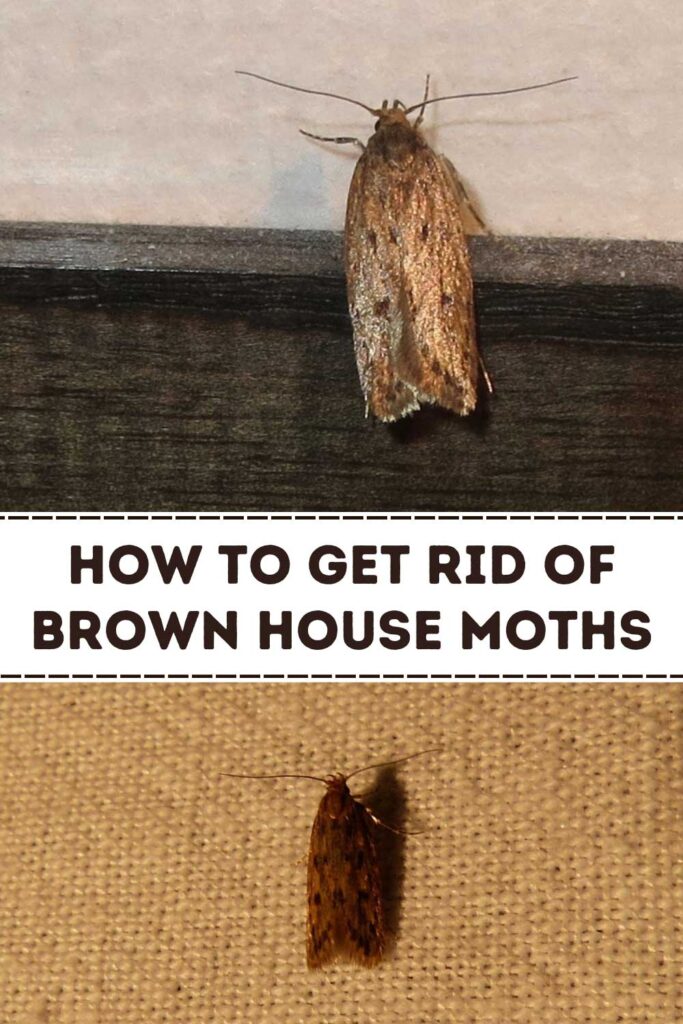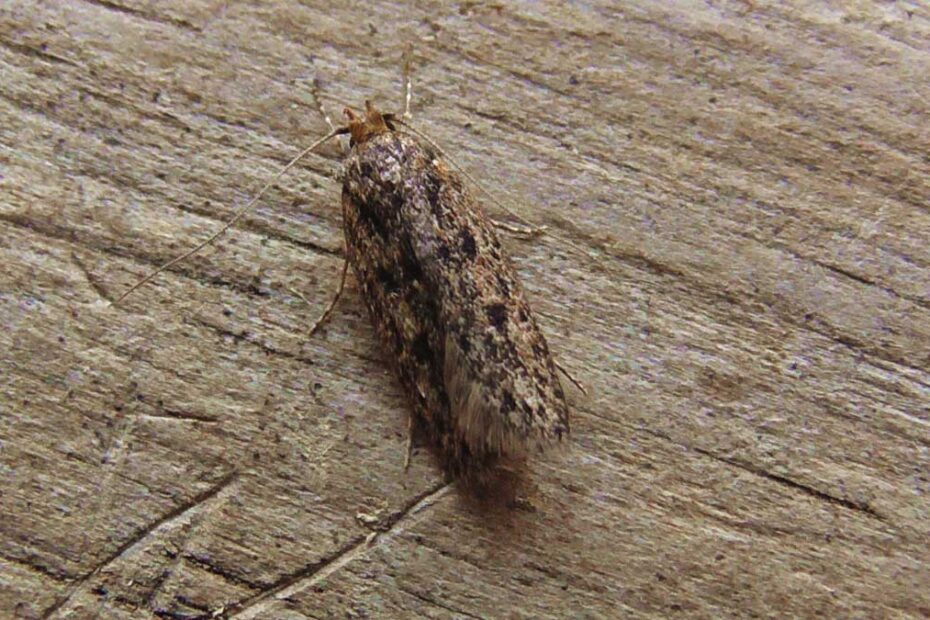Discovering brown house moths fluttering around your home can be both frustrating and worrisome. These tiny invaders not only damage your clothes and pantry items but also indicate a potential infestation that needs immediate attention. If you’re tired of dealing with these unwelcome guests, you’re in the right place.
Key Takeaways
- Effective Identification: Knowing the physical characteristics and signs of infestation helps in accurately identifying brown house moths and taking necessary actions.
- Common Causes: Recognizing breeding habits and attractants like natural fabrics and damp areas can prevent moth infestations.
- Prevention Strategies: Implementing home maintenance tips and proper storage solutions significantly reduces the risk of moths infesting your home.
- Natural Remedies: Essential oils like lavender and cedarwood, homemade traps, and herb sachets offer eco-friendly ways to repel or capture moths.
- Chemical Solutions: Insecticides and professional pest control services provide potent options for severe or persistent infestations, ensuring complete eradication.
- Long-term Maintenance: Regular inspections and cleanliness habits are crucial for sustained control over brown house moth infestations.

Identifying Brown House Moths
You must first identify brown house moths to effectively address an infestation.
Physical Characteristics
Brown house moths exhibit distinct features making identification easy.
Scientific Name
Hofmannophila pseudospretella
Color
Mottled brown with darker spots
Wingspan
Approx. 15-25 mm
Antennae
Thin and thread-like
Larvae
Creamy white, up to 20 mm long, with brown heads
Signs of Infestation
Spotting these signs indicates a brown house moth infestation.
- Damaged Fabrics: Holes in clothing, particularly in wool or silk, are common indicators, as larvae feed on natural fibers.
- Webbing: Silken webs in corners, under furniture, or in closets suggest moth activity.
- Droppings: Tiny black specks near infested items may be moth feces.
- Adult Moths: Noticing adult moths around lamps or windows is a clear sign of their presence.
Identifying these pests accurately ensures you can take the necessary actions to eradicate them effectively.
Common Causes of Infestation
Brown house moths can become unwelcome guests in your home for several reasons. Recognizing these causes can help you prevent infestations before they start.
Breeding Habits
Brown house moths breed in areas where they can find plenty of food for their larvae. Understanding their breeding habits is crucial in controlling their populations.
Breeding Grounds:
- Food Sources: Moth larvae feed on natural fibers, cereals, and dried fruit.
- Dark Spaces: They prefer undisturbed, dark places like closets attic corners and pantries.
- Moisture: Damp areas and improperly stored food can attract breeding moths.
Reproductive Cycle:
- Egg Laying: Female moths lay clusters of eggs close to food sources.
- Larval Stage: Larvae, which cause the most damage, can remain in this stage for several months, feeding and growing.
- Pupation: After the larval stage, they pupate and emerge as adult moths within a few weeks.
Attractants in the Home
Several factors in your home might be attracting brown house moths, contributing to an infestation.
Common Attractants:
- Natural Fabrics: Clothing and upholstery made of wool, silk, and cotton.
- Food Storage: Open containers of cereals, grains, and nuts act as food sources.
- Leftover Crumbs: Small food particles on floors and counters are also appealing.
- Warm Temperatures: Like most insects, brown house moths thrive in warm environments.
- Damp Areas: Bathrooms, basements, and kitchens with high humidity can harbor moths.
- Poor Hygiene: Regularly uncleaned areas provide ample food and breeding grounds.
By identifying and managing these breeding habits and attractants, you can significantly reduce the risk of brown house moth infestations in your home.
Prevention Strategies
Taking preventative steps effectively addresses the issue of brown house moths in your home. Implementing these strategies keeps these pests out and protects your belongings from damage.
Home Maintenance Tips
Regular cleaning and maintenance reduce the likelihood of moth infestations:
- Vacuum Regularly: Pay special attention to corners, under furniture, and in closets where moths can breed undisturbed.
- Seal Cracks and Crevices: Block potential entry points by sealing gaps around windows, doors, and walls.
- Monitor Humidity Levels: Maintain low humidity as moths thrive in moist environments.
- Use Moth Repellents: Use natural repellents such as cedar and lavender, placing them in closets and drawers.
- Inspect Second-Hand Items: Carefully check thrifted clothing and furniture for signs of moths before bringing them into your home.
Storage Solutions
Proper storage of susceptible items minimizes the chance of moth infestation:
- Airtight Containers: Store clothes, especially those made of natural fibers, in airtight plastic or vacuum-sealed bags.
- Clean Before Storage: Wash or dry-clean all items before storing to remove any eggs or larvae.
- Rotate Seasonal Clothing: Regularly rotate clothes to disturb any lingering moths.
- Store Food Properly: Place pantry items in sealed, airtight containers, especially grains, cereals, and dry pet food.
- Use Cedar Storage Units: Cedarwood acts as a natural moth repellent and is ideal for storing garments and linens.
Consistent application of these strategies effectively prevents brown house moth infestations, safeguarding your home and belongings.
Natural Remedies
Natural remedies offer safe and eco-friendly solutions to eliminate brown house moths. These methods can help you address infestations without resorting to harmful chemicals.
Essential Oils
Essential oils possess moth-repelling properties that are both effective and pleasant-smelling.
- Lavender Oil: Lavender oil deters moths with its strong fragrance.
- Application: Soak cotton balls in lavender oil and place them in infested areas.
- Effectiveness: Effective when replenished weekly.
- Cedarwood Oil: Known for its natural moth-repelling ability.
- Application: Apply cedarwood oil to wooden surfaces or use cedarwood blocks infused with the oil.
- Effectiveness: Maintains its potency over time but should be reapplied monthly.
- Peppermint Oil: Acts as a strong deterrent to moths.
- Application: Mix peppermint oil with water and spray it in closets and storage areas.
- Effectiveness: Refresh the spray bi-weekly for consistent protection.
Homemade Traps
Homemade traps can physically capture and reduce the moth population.
- Vinegar Trap: Effective for trapping larvae.
- Materials: Vinegar, sugar, and water.
- Steps:
- Mix equal parts vinegar, sugar, and water in a shallow dish.
- Place the dish near moth-infested areas.
- Check and replace the mixture every few days.
- Sticky Traps: Useful for capturing adult moths.
- Materials: Sticky glue, cardboard strips.
- Steps:
- Coat cardboard strips with sticky glue.
- Position the strips in closets and near infested locations.
- Replace strips once they capture moths.
- Herb Sachets: Herbs can serve as a deterrent while adding fragrance.
- Materials: Dry herbs (rosemary, thyme, cloves), small cloth bags.
- Steps:
- Fill cloth bags with dry herbs.
- Place the sachets in drawers, closets, and storage units.
- Refresh sachets every few months to maintain their effectiveness.
Chemical Solutions
Handling brown house moths often requires effective chemical solutions to ensure complete eradication. These methods can be particularly useful when natural remedies and prevention strategies don’t quite suffice.
Insecticides
Insecticides provide a powerful option for eliminating brown house moths:
- Residual Sprays: Apply these in areas where moths hide and lay eggs. Ensure safety by keeping children and pets away until the spray dries.
- Aerosol Sprays: Use these sprays for quick knockdown of visible adult moths. Target corners, closets, and storage areas.
- Dust Insecticides: Spread dust in cracks, crevices, and behind appliances. This method prevents larvae from maturing into adults.
- Moth Fumigants: Employ fumigants in closed environments. Always read and follow product instructions carefully.
Remember, proper application is key to effectiveness. Always follow the manufacturer’s instructions and consider wearing personal protective equipment (PPE) when handling these chemicals.
Professional Pest Control Services
Engaging professional pest control services is a robust option for severe or persistent infestations:
- Inspection: Professionals conduct rigorous inspections to identify infestation levels and affected areas.
- Targeted Treatment: Technicians use specialized treatments tailored to your home’s unique needs. This may involve advanced insecticides and application techniques.
- Follow-up Visits: Ensure all stages of moth life are addressed through planned follow-up visits, which help catch stragglers and prevent re-infestation.
- Expert Advice: Gain valuable advice on preventive measures and maintenance to avoid future infestations.
Hiring professionals can save you time and offer peace of mind knowing experts handle the problem.
Choosing the right chemical solutions or professional services depends on the severity of your moth problem and personal preferences.
Long-term Maintenance
Consistent long-term maintenance ensures you’re free from brown house moth infestations. Carry out regular habits and inspections to keep these pests at bay.
Regular Inspections
Conduct regular inspections in areas prone to moth infestations.
- Check Problem Areas: Inspect closets, pantries, and other dark, undisturbed spaces where moths thrive.
- Look for Signs: Identify dropped moth scales, larvae excrement, and fabric damage.
- Use Tools: Employ flashlights and magnifying glasses for thorough examinations.
- Record Findings: Keep a log of your inspections to track problem areas and moth population changes.
Cleanliness Habits
Maintain cleanliness to deter brown house moths effectively.
- Vacuum Frequently: Clean carpets and upholstery, focusing on corners and under furniture.
- Seal Gaps: Close any cracks or holes in walls, floors, and storage units.
- Declutter Spaces: Remove unused clothing, linens, and fabrics from storage areas.
- Monitor Food Storage: Use airtight containers for food, and dispose of expired items regularly.
By integrating regular inspections and maintaining stringent cleanliness habits, you can achieve long-term control over brown house moth infestations.
Conclusion
Tackling brown house moth infestations requires a proactive and multifaceted approach. By identifying these pests early and understanding their breeding habits, you can take effective steps to eliminate them. Regular cleaning, proper storage, and natural remedies can significantly reduce the risk of infestations. When these measures aren’t enough, chemical solutions and professional pest control services offer reliable alternatives. Consistent long-term maintenance, including regular inspections and cleanliness, is essential to keep your home moth-free. Carry out these strategies to safeguard your belongings and maintain a pest-free environment.
Frequently Asked Questions
What are the physical characteristics of brown house moths?
Brown house moths have a mottled brown color, a wingspan of approximately 15-25 mm, and thin, thread-like antennae. Their larvae are creamy white with brown heads and can grow up to 20 mm long.
How can I identify a brown house moth infestation?
Signs of an infestation include damaged fabrics, silken webbing, droppings, and the presence of adult moths.
What attracts brown house moths to homes?
Brown house moths are attracted to natural fibers, open food containers, and uncleaned areas. They thrive in dark, undisturbed spaces with ample food sources.
How do brown house moths reproduce?
Female moths lay eggs near food sources. The larvae can remain in their damaging stage for several months, contributing to prolonged infestations.
What are some prevention strategies for brown house moths?
Regular cleaning, sealing cracks, monitoring humidity levels, and using natural repellents like cedar and lavender are effective prevention strategies. Proper storage solutions are also important.
What natural remedies can I use to eliminate brown house moths?
Essential oils like lavender, cedarwood, and peppermint are effective repellents. Homemade vinegar traps and sticky traps can capture larvae and adult moths. Herb sachets filled with dried herbs can also deter moths.
Are there chemical solutions for brown house moth infestations?
Yes, various insecticides—including residual sprays, aerosol sprays, dust insecticides, and moth fumigants—can be used. It is important to follow product instructions and safety precautions.
When should I consider professional pest control services?
Professional pest control services should be considered for severe or persistent infestations. They provide thorough inspections, targeted treatments, and follow-up visits to ensure complete eradication.
What long-term maintenance practices can prevent future moth infestations?
Conduct regular inspections in closets and pantries, maintain cleanliness by vacuuming frequently, seal gaps, and monitor food storage. These practices help achieve long-term control over moth populations.
